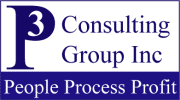Supply Chain / Distribution Environments

Challenges
Supply chain managers all have the same goal: get the right products to the right place at the right time at the least cost. The above statement reveals a difficult dilemma for a manager. It seems that on the one hand they should carry large amounts of inventory to ensure availability and on the other hand, they should carry low inventories to minimize costs.
The replenishment time (the time from consumption of an item to its replenishment) of most products is so long that companies need to rely heavily on forecasting methods to try to answer the question of how much and where to keep inventory. In spite of using more and more advanced forecasting tools, they frequently suffer from:
- Too much inventory of some specific SKU’s in some places, not enough in others (stock outs)
- Low inventory turns resulting in very high carrying costs
- High product losses due to expiry, obsolescence and damage
- Focus on selling slow movers at the expense of the more profitable fast movers
- The need to reduce prices (incentives) to push surplus stock
- Lost sales due to dissatisfied customers looking elsewhere for similar products
Causes
The typical supply chain today operates under a ‘push’ model, meaning inventory is ‘pushed’ downstream toward the retailer in hopes of increasing consumption by the end user. While the ‘push’ system seems to make logical sense, it relies on very accurate forecasts to predict which product will be needed where and when. The longer the replenishment time the further out a company needs to forecast and the less reliable the forecast becomes.
Results
We help companies resolve these issues by dramatically reducing replenishment lead times and implementing a ‘consumption based replenishment’ model. Typical benefits our customers experience are:
- Significantly higher inventory turns
- Lower inventory levels throughout the supply chain (typically 50% lower)
- Ability to free up shelf space for a larger variety of SKU’s
- Very few lost sales due to stock outs
- Much lower waste due to obsolescence, expiry, and damage
- Increased availability of more profitable products in front of the customer and the slow movers off the shelves (or not being produced at all)
Not only does our approach dramatically reduce net working capital but also maximizes the availability of the highest demand and most profitable SKU’s resulting in significantly higher profits and market share.
